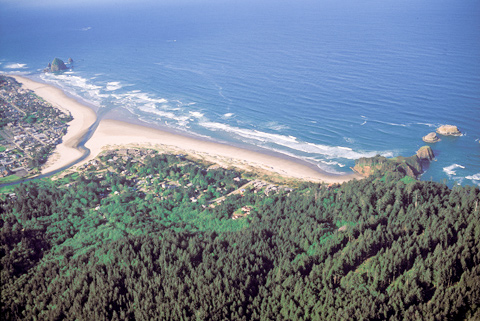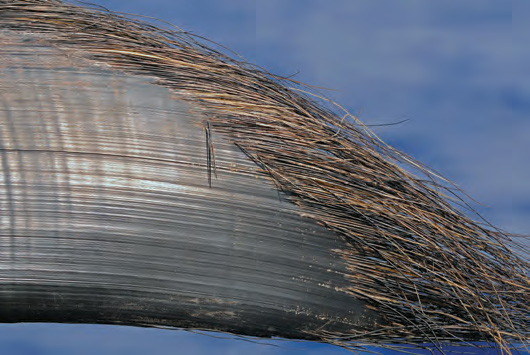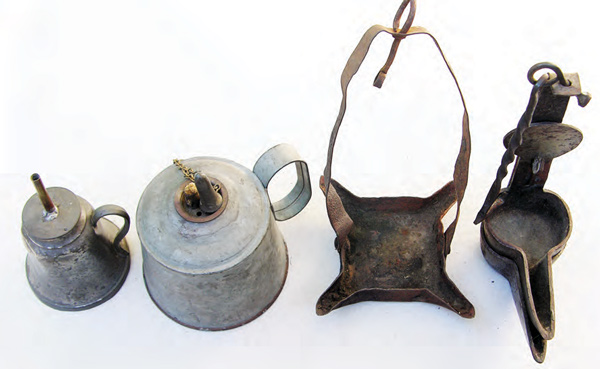Whale Encounters
In November 2015 a blue whale washed up on Ophir Beach, southwest Oregon, about 50 miles north of the California border. An extremely rare event, this was the first known blue whale stranding along the Oregon coast since at least the 1960s.
Fish and marine mammal strandings were a common and important food source for coastal Indians and scavengers such as the condor. On 18 November 1805, while at Station Camp near the mouth of the Columbia River, Clark and a party of ten explored the coastline north from Cape Disappointment. While on that junket Reubin Field shot a condor feeding on whale remains. Detailed measurements were taken of the bird, but drawings and a more detailed discussion of it, Gymnogyps californianus, would be made by Clark on 16 February 1806, and Lewis the following day.
A few weeks later on 27 December 1805, as the corps was finishing the construction of Fort Clatsop, both Private Whitehouse and Sergeant Gass recorded that passing Indians told of a whale washed ashore south along today’s Oregon coast. The next day Sergeant Ordway recorded that Captain Lewis and three men prepared to leave to see the whale, but foul weather prevented their departure. On 29 December 1805, Clark provided more details:
we were informed day before yesterday that a whale had foundered on the coast to the S. W. near the Kil a mox N. and that the greater part of the Clat Sops were gorn for the oile & blubber
The next few days were spent finishing the fort, celebrating the New Year, and trading with the local Indians. On 3 January 1806, both Captains report:
At 11 A. M. we were visited by our near neighbours, Chief or Tiá, Co-mo-wool; alias Conia and six Clatsops. the[y] brought for sale some roots buries and three dogs also a small quantity of fresh blubber. this blubber they informed us they had obtained from their neighbours the Callamucks who inhabit the coast to the S. E. near whose vilage a whale had recently perished. this blubber the Indians eat and esteeme is excellent food.”
They go on to note that dog and elk marrow bones were the best food the Corps had at that time. Finally on 5 January 1806, passing Indians traded them some blubber and Lewis reported:
it was white & not unlike the fat of Poark, tho’ the texture was more spongey and somewhat coarser. I had a part of it cooked and found it very pallitable and tender, it resembled the beaver or the dog in flavour.
The Ecola Whale
Clark prepared to set out the next morning with twelve men in two canoes to trade for as much blubber as their small amount of merchandise would allow. Men returning from the salt works that day also reported the good meat of the whale. The party was treated to another fine day on 8 January 1806, affording a great view of the sea coast. They arrived at five lodges of the Tillamook Nationnear the mouth of Ecola Creek on the north side of present-day Cannon Beach—NeCus’ Village. Clark best described the scene:
Crossed a Creek 80 yards near 5 Cabins, and proceeded to the place the whale had perished, found only the Skelleton of this monster on the Sand between 2 of the villages of the Kil a mox nation; the Whale was already pillaged of every valuable part by the Kil a mox Inds. in the vecinity of whose village’s it lay on the Strand where the waves and tide had driven up & left it. this Skeleton measured 105 feet. I returned to the village of 5 Cabins on the Creek which I shall call E co-la or whale Creek, found the nativs busily engaged boiling the blubber, which they performed in a large Squar wooden trought by means of hot Stones; the oil when extracted was Secured in bladders and the Guts of the whale; the blubber from which the oil was only partially extracted by this process, was laid by in their Cabins in large flickes for use; those flickes they usially expose to the fire on a wooden Spit untill it is prutty well wormed through and then eate it either alone or with roots of the rush, Shaw na tâk we or diped in the oil. The Kil a mox although they possessed a large quantities of this blubber and oil were so prenurious that they disposed of it with great reluctiance and in Small quantities only; insomuch that my utmost exertion aided by the party with the Small Stock of mer chindize I had taken with me were not able to precure more blubber than about 300 wt. and a fiew gallons of oil; Small as this Stock is I prise it highly; and thank providence for directing the whale to us; and think him much more kind to us than he was to jonah, having Sent this monster to be Swallowed by us in Sted of Swallowing of us as jonah’s did.
Judging from the skeleton’s length, it could have been that of a blue whale (Balaenoptera musculus), the largest of all living animals. Clark was meticulous in his calculations, but he was measuring a dismembered whale and experts have questioned his figures. Historic data show that the maximum length of blue whales in the North Pacific is about 80 feet, while in the South Pacific they reach over 100 feet.[2]John Calambokidis and Gretchen Steiger, Blue Whales (Stillwater, MN: Voyageur Press, 1997), 20-23, 43-52. John and his wife Gretchen report that data from the first half of the twentieth century, … Continue reading
Baleen
Clark and most of the party returned late on 10 January 1806 to Fort Clatsop and while Lewis’s journal reviews the major events of the trip, Ordway and Whitehouse add some new intriguing details. Both mention the party bringing back “jaw bones” and Ordway adds: “and some other black bones which are handsome.” That could only mean that in addition to blubber and oil, they also brought back some of the 270-400 plates of baleen, the yard long black plastic-like filter feeders from the mouth of the whale. Much later, on 14 March 1806, Clark records yet another reference to baleen in a discussion of trading ships that visit the coast.
we are informed by the Clatsops that they have latterly Seen an Indian from the Quin-na-chart Nation who reside Six days march to the N. W and that four vessels were there and the owners Mr. Haley, Moore, Callamon & Swipeton were tradeing with that noumerous nation, whale bone Oile and Skins of various discription.
Train Oil
It is probable that lamps carried by the expedition, intended for lard or bear grease, could have been used to burn whale oil for light at Fort Clatsop. Two possible oil lamp configurations are at right in the photo. On the left are two nineteenth-century whale oil lamps.
Both Lewis and Clark note the extensive trade network between the Indians living far upstream along the Columbia, near present-day Portland, Oregon, and the coastal Indians. While on their trip up the Columbia River on 6 April 1806, they again noted the trade in “train oil” (whale oil) between the Cushooks nation and the Killamucks.[3]Gary E. Moulton, ed., The Journals of the Lewis and Clark Expedition, 13 vols. (Lincoln: University of Nebraska Press, 1983-2001), 7:82-83.
On 24 January 1806 Lewis recorded several species of roots which were commonly eaten with “train oil.” This led me to read the account of John R. Jewitt, a sailor captured and enslaved by the Nootka Indians to the north just prior to the Corps’ time at Ft. Clatsop. His account of two and a half years of captivity provides a detailed look at the extensive use of whale oil in virtually every meal of northwest coastal Indians, perhaps suggesting why they were so reluctant to trade any to the expedition members.[4]Hilary Stewart, ed., The Adventures and Sufferings of John R. Jewitt Captive of Maquinna (Seattle: University of Washington Press, 1987), 51, 78, 131. Frequently insulted, robbed, and occasionally … Continue reading
The welcome addition of blubber and whale oil to the diet lasted until 29 January 1806, but there was still another treat that came in on 3 February 1806 with the return of the salt makers and their two bushels of salt. They also brought some whale meat which they added to their poor elk meat and “finds it eats verry well-” according to Ordway. Whitehouse added: “The natives call the whale meat E-Co-ley.—” This suggests that the whale meat lasted over a month while the elk meat frequently spoiled in only a few days. It may be the fat content made the difference in spoilage, or it could be the meat was from a new stranding, since whales were far more numerous in 1806 than today.
Besides adding much needed high calorie fat to supplement their Spartan diet, it is likely that the expedition made use of whale oil in their oil lamps at Fort Clatsop, which they had in addition to candle lanterns.4 The rendering of blubber was one more example of the Corps taking every opportunity to render fat along their route.
To see how the author collected whale blubber and rendered its oil, read the original, full-length article: https://lewisandclark.org/wpo/pdf/vol43no2.pdf#page=26.
Notes
| ↑1 | John Fisher, “Baleen, Blubber & Train Oil from Sacagawea‘s ‘Monstrous fish'”, We Proceeded On, May 2017, Volume 43, No. 2, the quarterly journal of the Lewis and Clark Trail Heritage Foundation. The original, full-length article is provided at lewisandclark.org/wpo/pdf/vol43no2.pdf#page=26. |
|---|---|
| ↑2 | John Calambokidis and Gretchen Steiger, Blue Whales (Stillwater, MN: Voyageur Press, 1997), 20-23, 43-52. John and his wife Gretchen report that data from the first half of the twentieth century, when most blue whales were harvested, indicates females could reach about one hundred feet in length in the Antarctic or Southern Ocean. Hunted to near extinction during the mid-twentieth century, their population is about 1 percent of historical estimates of 200,000 whales. The smaller-sized blue whales off the North American coast reach a maximum length of about eighty feet. The population along the California and Mexican coast seems to be recovering, while severely depleted stocks in the other oceans may take decades. |
| ↑3 | Gary E. Moulton, ed., The Journals of the Lewis and Clark Expedition, 13 vols. (Lincoln: University of Nebraska Press, 1983-2001), 7:82-83. |
| ↑4 | Hilary Stewart, ed., The Adventures and Sufferings of John R. Jewitt Captive of Maquinna (Seattle: University of Washington Press, 1987), 51, 78, 131. Frequently insulted, robbed, and occasionally murdered by the crews of trading ships, the Indians along the Northwest coast sometimes attempted to capture the ships. Ship armourer and blacksmith John R. Jewitt was one of two survivors of a successful attack and capture of the ship Boston on 22 March 1803. The chief allowed him to live because of his valuable skills, but only if he agreed to be the chief’s slave. For the next two and a half years he kept a journal of his life among the Nootka Indians. On 19 July 1805, he was ransomed by another ship. The ship continued trading along the coast, and in November returned to the mouth of the Columbia where they met Indians who had traded with Lewis and Clark just two weeks earlier. After returning to New England he published his “Adventures,” one of the most popular journals of the nineteenth century. |
Experience the Lewis and Clark Trail
The Lewis and Clark Trail Experience—our sister site at lewisandclark.travel—connects the world to people and places on the Lewis and Clark Trail.
Discover More
- The Lewis and Clark Expedition: Day by Day by Gary E. Moulton (University of Nebraska Press, 2018). The story in prose, 14 May 1804–23 September 1806.
- The Lewis and Clark Journals: An American Epic of Discovery (abridged) by Gary E. Moulton (University of Nebraska Press, 2003). Selected journal excerpts, 14 May 1804–23 September 1806.
- The Lewis and Clark Journals. by Gary E. Moulton (University of Nebraska Press, 1983–2001). The complete story in 13 volumes.





